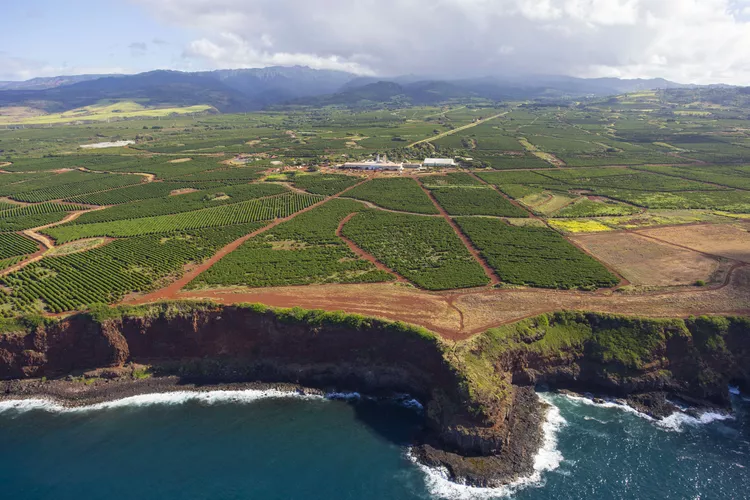Article Summary
The Best Coffee from Hawaii: A Flavorful Journey
Hawaiian coffee is renowned as one of Hawaii’s top agricultural products. With an impressive annual production exceeding 8 million pounds, Hawaii stands as the only U.S. state where coffee is cultivated.
Initially introduced to Hawaii in the early 1800s, coffee farming flourished notably in the early 20th century, primarily on small farms. Although Kona Coffee from the Big Island has gained significant fame, coffee is now cultivated across all major islands on over 950 farms, covering more than 7,900 harvested acres. Hawaii’s unique combination of warm, sunny weather, rich volcanic soil, rolling hillsides, gentle trade winds, and abundant rainfall contributes to producing some of the finest coffee globally, making the Hawaiian coffee industry worth an estimated $62 million as of 2017.
Interestingly, while visiting Hawaii, many tourists discover that purchasing roasted coffee beans or pre-ground coffee is more economical than at home. Consequently, it’s common to see island visitors buying coffee to take back with them. To alleviate high shipping costs, many Hawaiian coffee farms operate their own websites, offering shipping at significantly reduced rates.
Let’s explore the distinct styles of coffee produced in Hawaii.
Hawaii: The Big Island
Kona Coffee
Kona Coffee is grown on over 600 independent farms, exclusively within North and South Kona on the Big Island. This premium coffee is celebrated for its delicate, aromatic flavor, accounting for nearly half of the coffee produced in Hawaii. While it is frequently blended with stronger foreign coffees, purists argue that 100 percent Kona Coffee should be the standard, although some may find its flavor quite robust.
The Kona Coffee Farmers Association provides valuable information regarding farms that offer tours and tastings of their products.
If you’re planning to visit the Big Island later in the year, it’s advisable to coincide your trip with the annual Kona Coffee Cultural Festival, celebrated every November.
Ka’u Coffee
Ka’u Coffee is cultivated on the slopes of Mauna Loa, above Pahala in the Ka’u district on the Big Island. Initially farmed by former sugarcane workers in 1996, Ka’u Coffee has garnered acclaim in national and regional tasting competitions. Known for its distinctive aroma and smooth taste, Ka’u Coffee has truly made its mark.
You can find Ka’u Coffee at local farmers’ markets and stores, as well as the Hilo Coffee Mill.
Puna Coffee
Puna Coffee thrives on the slopes of Mauna Loa near Hawaiian Acres in Puna, positioned between Hilo and Hawaii Volcanoes National Park. This coffee is characterized by its full body and nutty overtones, reminiscent of fine mochas when roasted to a medium level.
Puna Coffee is also available at local farmers’ markets and the Hilo Coffee Mill.
Hamakua Coffee
Hamakua Coffee is grown on Mauna Kea’s slopes, north of Hilo in the Hamakua District. After a 100-year hiatus, local farmers reinstated coffee farming in this area in 2000, cultivating the land previously owned by the Hamakua Sugar Company.
With a rich flavor profile and a chocolaty-smooth finish, Hamakua Coffee can be purchased at farmers’ markets, local stores, and the Hilo Coffee Mill.
Kauai: The Coffee Paradise
Kauai Coffee
In 1987, 22,000 acres of former sugarcane land on Kauai were converted into coffee plantations by the Kauai Coffee Company. Despite damage from Hurricane Iniki in 1992, by 1996, the annual harvest rivaled that of the Kona Coffee Belt. Today, the Kauai Coffee Company cultivates 100 percent Kauai Coffee, utilizing five varieties of Arabica coffee beans on the largest coffee farm in the United States.
The Kauai Coffee Company extends a warm welcome to visitors at their Visitor Center, conveniently located off Highway 50 in Kalaheo. Guests can sample estate coffees, browse the gift shop, and participate in tours demonstrating the entire coffee process, from blossoming to harvesting and roasting.
Kauai coffee is becoming increasingly popular and is often preferred over Kona due to its mild acidity and flavorful profile.
Maui: Diverse Coffee Farms
Maui Coffee
According to the Maui Coffee Association, 32 coffee farms of various sizes populate the island of Maui, situated on the slopes of Haleakala and the West Maui Mountains. Notably, the organic farm, ONO Organic Farms, is found in Hana, while the largest farm, covering 375 acres, is MauiGrownTM Coffee, located high above Ka’anapali.
The coffee industry on Maui has grown significantly, often replacing former sugar cane fields.
Moloka’i: Unique Flavors
Moloka’i Coffee
The village of Kualapu’u in central Moloka’i boasts a 500-acre coffee plantation and mill run by Coffees of Hawaii. This coffee is characterized by its rich body, medium roast, and mild acidity, complemented with a delightful hint of chocolate at the finish. It is crafted from washed, sun-dried Arabica beans cultivated in Moloka’i’s rich volcanic soil.
When visiting Moloka’i, don’t forget to stop by the Espresso Bar and Café, as well as the Plantation Gift Shop. You may also order their exceptional coffee online to bring a piece of Moloka’i home with you.
Oahu: Waialua Coffee
Waialua Coffee
Located at an elevation of 600-700 feet above sea level, Waialua Estate grows Arabica Typica coffee on 160 acres of land previously used for sugarcane, situated between the towns of Wahiawa and Waialua. Notably, Waialua Estate also features a 20-acre cacao orchard and operates as a division of Dole Food Company Hawaii.
The coffee is known for its smooth, mellow flavor, offering a well-balanced cup with a medium body and a clean finish, leaving hints of chocolate and a pleasantly lingering aftertaste.
Waialua Estate Coffee is widely available across Hawaii, and customers can also purchase it online.
In summary, Hawaiian coffee offers a remarkable diversity of flavor profiles across its islands, making it an essential experience for any coffee lover or traveler to consider during their visit to this tropical paradise.





